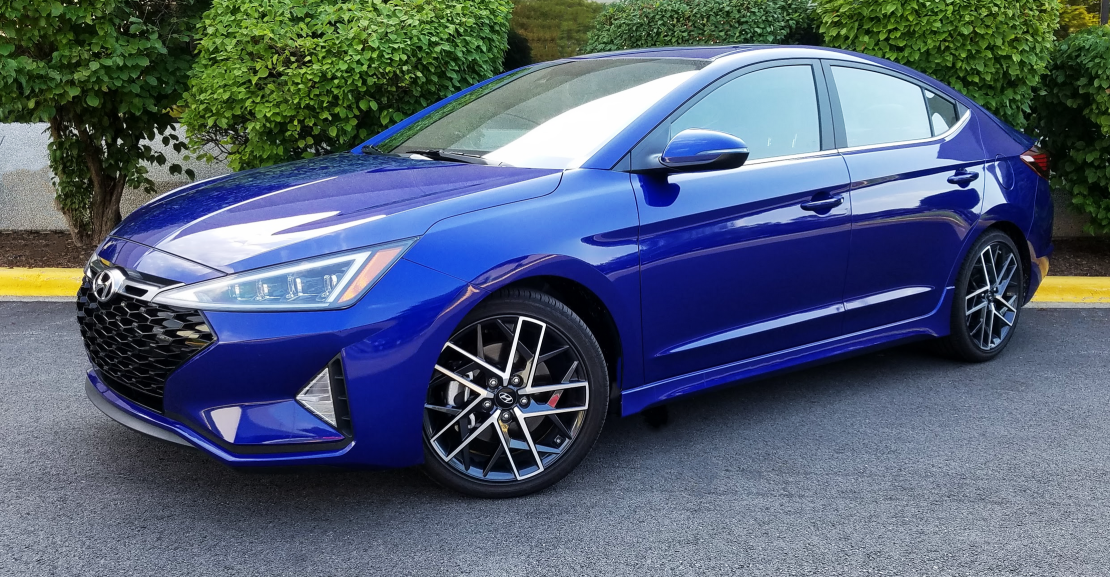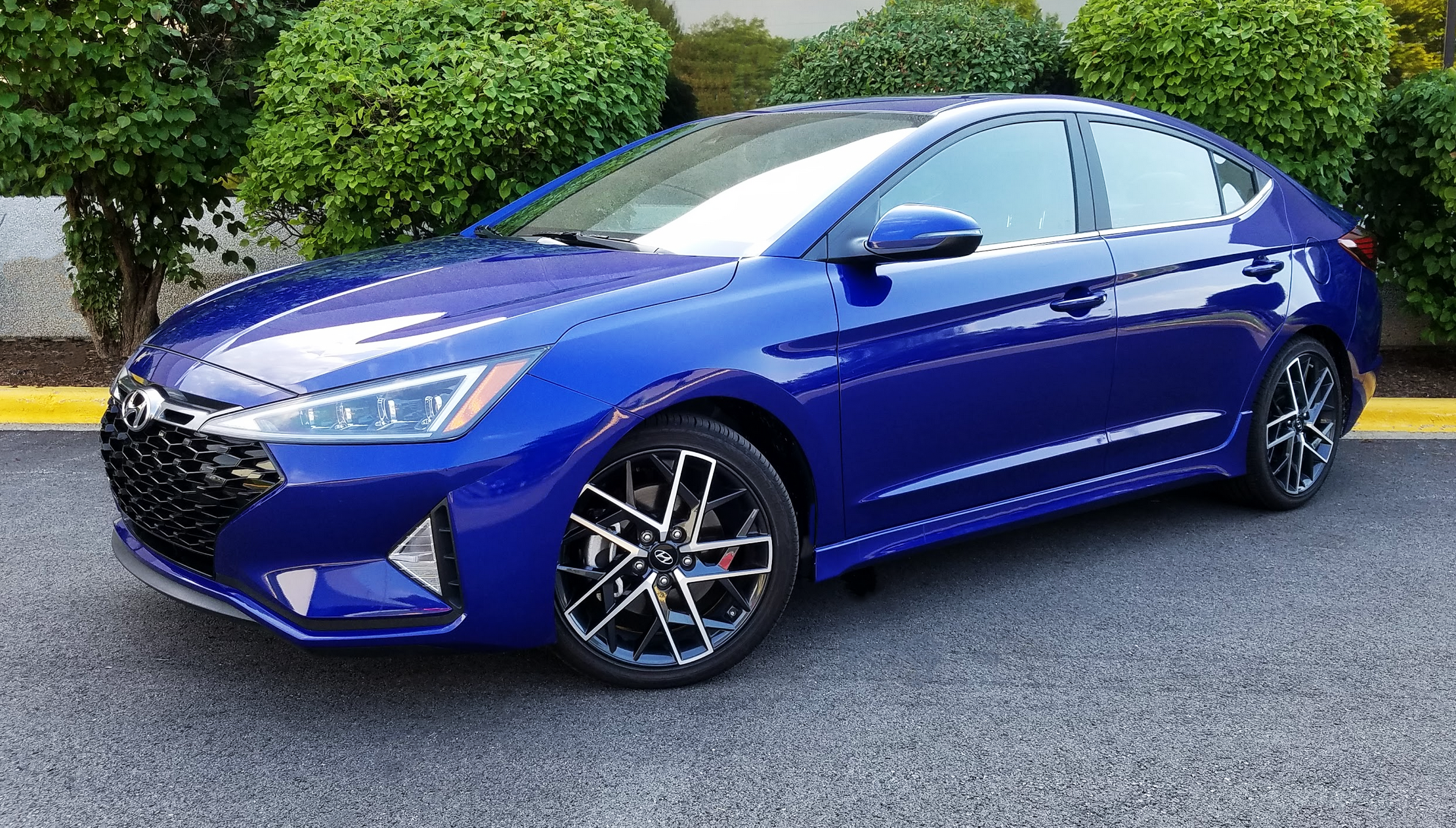
 2019 Hyundai Elantra Sport M/T
2019 Hyundai Elantra Sport M/T
Class: Compact Car
Miles driven: 340
Fuel used: 13.4 gallons
| CG Report Card | |
|---|---|
| Room and Comfort | B- |
| Power and Performance | B+ |
| Fit and Finish | B- |
| Fuel Economy | B- |
| Value | A- |
| Report-card grades are derived from a consensus of test-driver evaluations. All grades are versus other vehicles in the same class. Value grade is for specific trim level evaluated, and may not reflect Consumer Guide's impressions of the entire model lineup. | |
| Big & Tall Comfort | |
| Big Guy | B- |
| Tall Guy | B- |
| Big & Tall comfort ratings are for front seats only. "Big" rating based on male tester weighing approximately 350 pounds, "Tall" rating based on 6'6"-tall male tester. | |
| Drivetrain | |
| Engine Specs | 201-hp 1.6-liter |
| Engine Type | Turbo 4-cylinder |
| Transmission | 6-speed manual |
| Drive | Front-wheel drive |
Real-world fuel economy: 25.4 mpg
Driving mix: 55% city, 45% highway
EPA-estimated fuel economy: 22/30/25 (city, highway, combined)
Fuel type: Regular gas
Base price: $22,600 (not including $920 destination charge)
Options on test vehicle: Carpeted floor mats ($135)
Price as tested: $23,655
Quick Hits
The great: Bargain pricing; snappy acceleration; fun manual shifter
The good: Crisp handling with decent ride quality; clear control layout
The not so good: Some low-buck interior materials
More Elantra price and availability information
John Biel
The Hyundai Elantra compact sedan comes a number of different ways to try to serve a variety of needs for that supposedly endangered species, the sedan buyer. That includes a Sport model with a veneer of driving entertainment overlaid on its fundamental economy-car role.
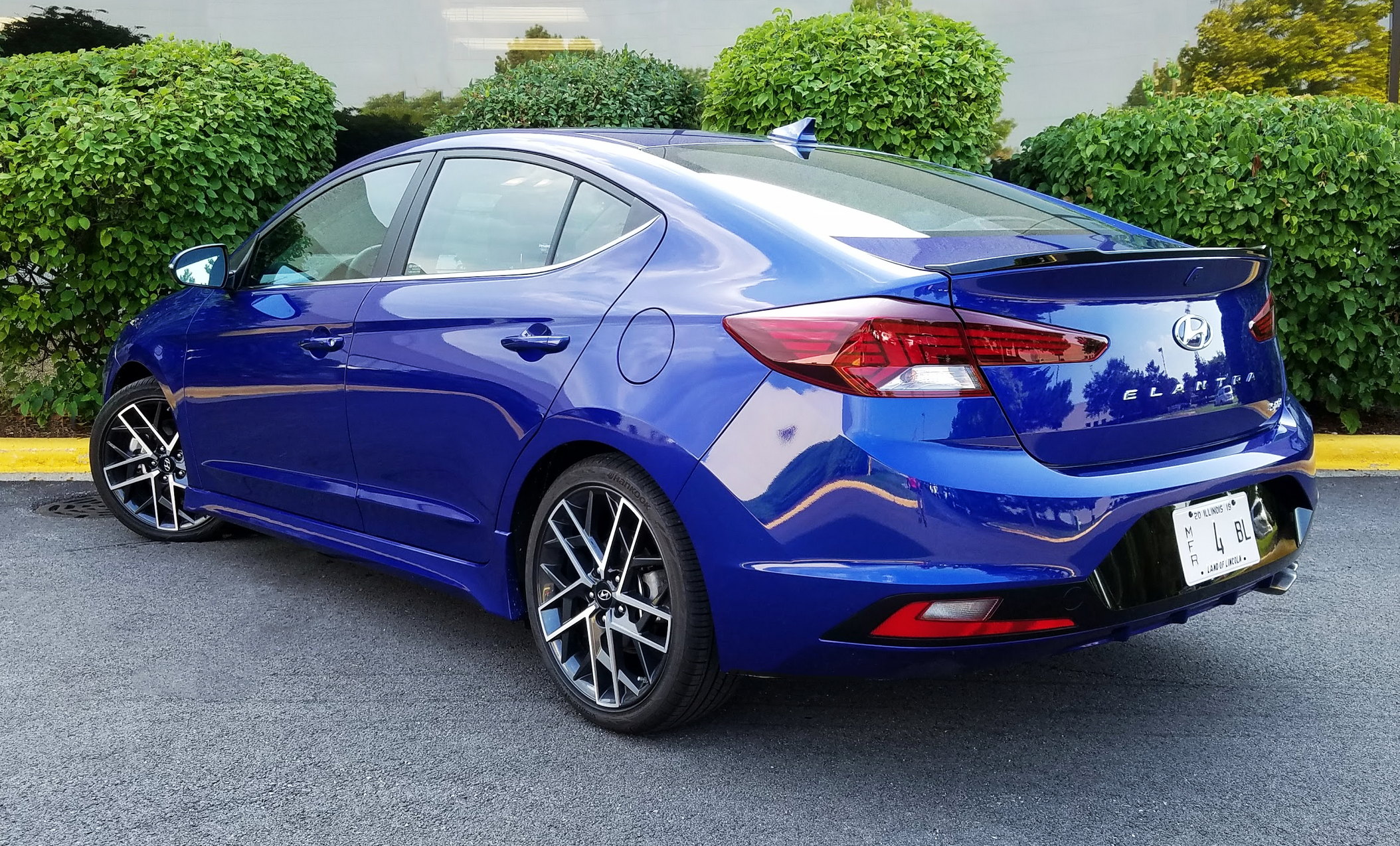
Twenty nineteen Elantras all receive an exterior and interior freshening to their 2017-vintage packages. Sports have been updated with a reshaped and resurfaced black grille, and a specifically trimmed version of the revised instrument panel with a unified enclosure for driving gauges and the in-dash touchscreen, altered ventilation vents, and different controls for the climate system. But the powerteams and chassis features that set the Sport apart from its siblings remain as they have been.
Test Drive: 2019 Hyundai Elantra Limited
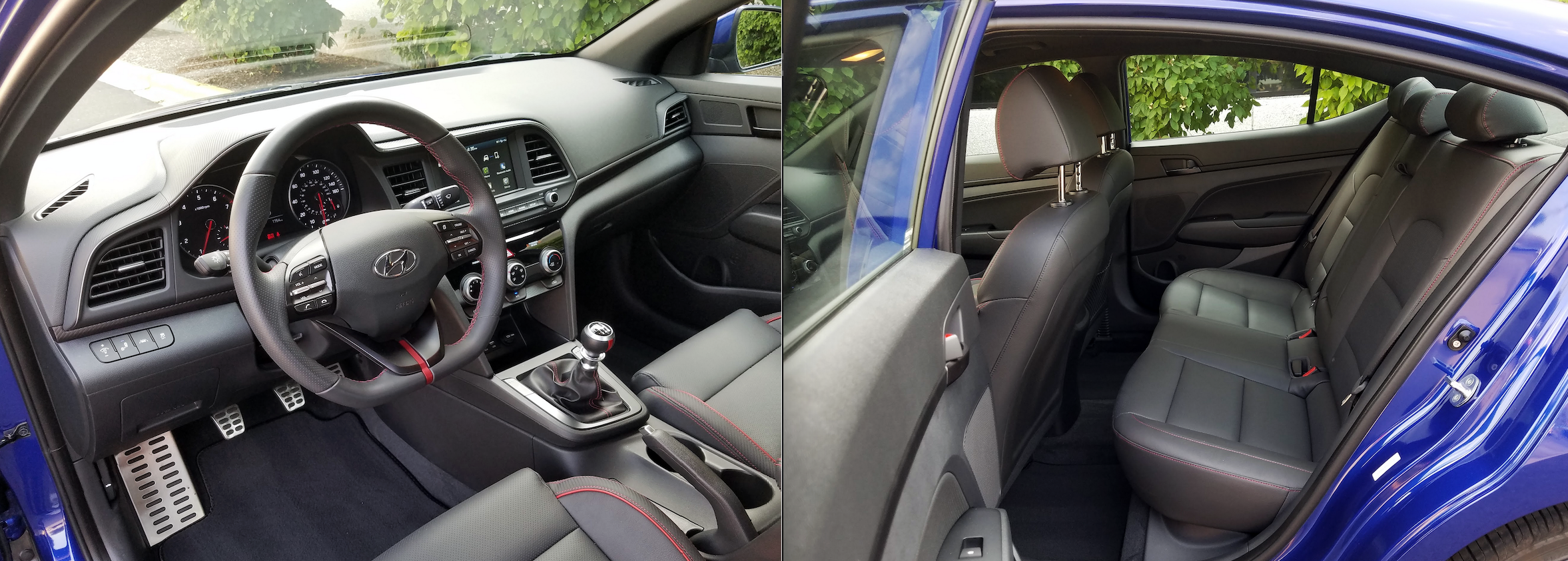
Among Elantras, the Sport has exclusive claim on a turbocharged 1.6-liter 4-cylinder engine that puts out 201 horsepower and 195 lb-ft of torque—far and away the most power in the product line. The engine comes paired with a 6-speed manual transmission as standard equipment, but a 7-speed automated-manual gearbox is available as an $1100 option. When Consumer Guide tried out an Elantra Sport in 2017, it had the automatic, but CG’s ’19 tester stuck with the stick. For 2020, the manual transmission is no longer available, leaving the 7-speed auto as the only choice.
Quick Spin: 2019 Hyundai Elantra GT N Line
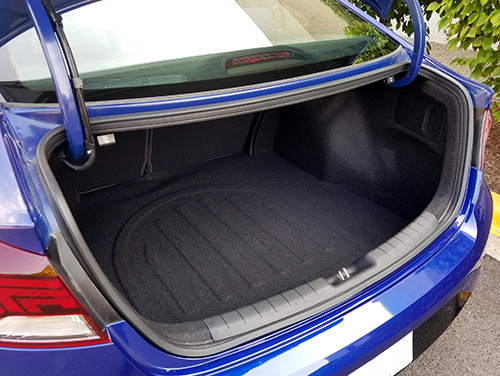
Happily, 3-pedal driving in a Sport is a delight. The 6-speed shifts with a high level of precision—there’s no rubberiness—and an easy-to-use clutch needs no tricks for smooth take-up. They make for an uncomplicated and fun driving experience, and of course they let drivers play with the spiced-up 1.6. Not noticeably hampered by turbo lag, the powerplant makes the Elantra Sport snappy off the line. This reviewer logged 203.9 miles in the test car, with a 50/50 mix of city- and highway-type driving, and saw 26.13 mpg, which exceeds the EPA’s combined-mileage estimate of 25 mpg. (City and highway projections are 22 and 30 mpg, respectively. Note that the automatic trans has better EPA ratings than the manual.)
There’s more that sets the Sport apart from other Elantras, starting with an independent multilink rear suspension (in place of the others’ torsion-bar unit), a rear stabilizer bar, and larger front disc-brake rotors. Handling won’t embarrass any premium-grade sport sedans, but it‘s quite good relative to its direct competitors, and it does this while still delivering a pleasing degree of ride quality. With its bigger binders, the Sport comes securely to a stop without conspicuous nosedive.
Test Drive: 2018 Hyundai Elantra Eco

Since we first sampled the Elantra Sport, LED headlights, a power sunroof, blind-spot detection, and rear cross-traffic alert have joined the complement of standard-equipment. Continued telltale Sport features include distinct 18-inch alloy wheels and low-profile tires, bright-metal pedal faces, a leather-wrapped flat-bottom steering wheel, sport front bucket seats, special black headliner, and a specific gauge cluster. Other standard items are LED taillights and daytime running lights, hands-free “smart trunk” release, 3.5-inch thin-film transistor (TFT) information display in the instrument cluster, seven-inch color touchscreen display audio system with six speakers, HD and satellite radio, Android Auto and Apple CarPlay connectivity, smartphone/USB and auxiliary-input jacks, two charging USB ports, heated front seats, push-button starting, remote keyless entry, lane-keeping assist, and forward-collision avoidance assist.
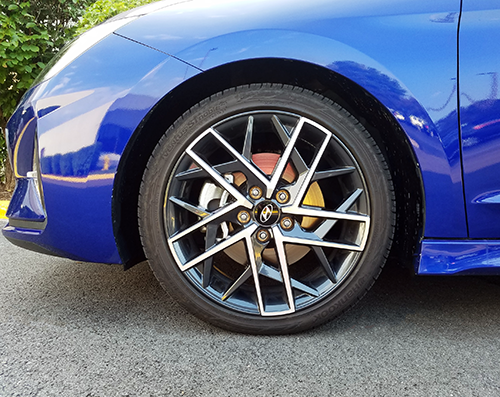
Some Elantras are nicer than others inside, but not even the line-capping Limited that CG previously tested could be considered outright luxurious. Textured black dash trim and contrast stitching on the leather upholstery further the Sport look, but use of soft-touch materials is limited to the door centers, armrests, and lid of the console box. The bucket seats are effectively supportive. Driving controls are big and legible. Convenient volume and tuning knobs help make the audio system easy to use, and the reorganized climate controls use direct-setting dials and just a few clearly marked buttons.
Passenger room in front is good, but the rear seat can be short of legroom if tall occupants in front need lots of stretch-out space. Three-abreast rear seating for adults isn’t really practical. Headroom is plentiful in either row. Thin roof pillars clear the way for good all-around driver vision. Cabin storage of incidentals is met by a big glove box, a modest console box, a covered bin with auxiliary/USB ports and two 12-volt plugs at the front of the console, and a net pouch on the back of the front-passenger seat. Pockets with bottle holders are in all four doors, and there are pairs of exposed cup holders in the console and the rear pull-down center armrest.
The trunk displays good space for the class, with a wide, flat floor and a low liftover. The 60/40-split rear seats fold for added cargo capacity, albeit at several inches above the level of the trunk floor. In addition, a bulkhead behind the seats reduces the passage between trunk and interior. Still, even with these loading obstacles, this tester managed to get a coffee table and a bedroom nightstand into the trunk and folded seats.
In today’s automotive environment, a sedan with a manual transmission is a rare sight. The 6-speed Elantra Sport provides its mix of engaging driving characteristics, feature selection, and compact-car utility for a tempting base price of $23,520 with delivery. Now you know how much unicorns cost.
Test Drive: 2019 Mazda 3 Hatchback AWD
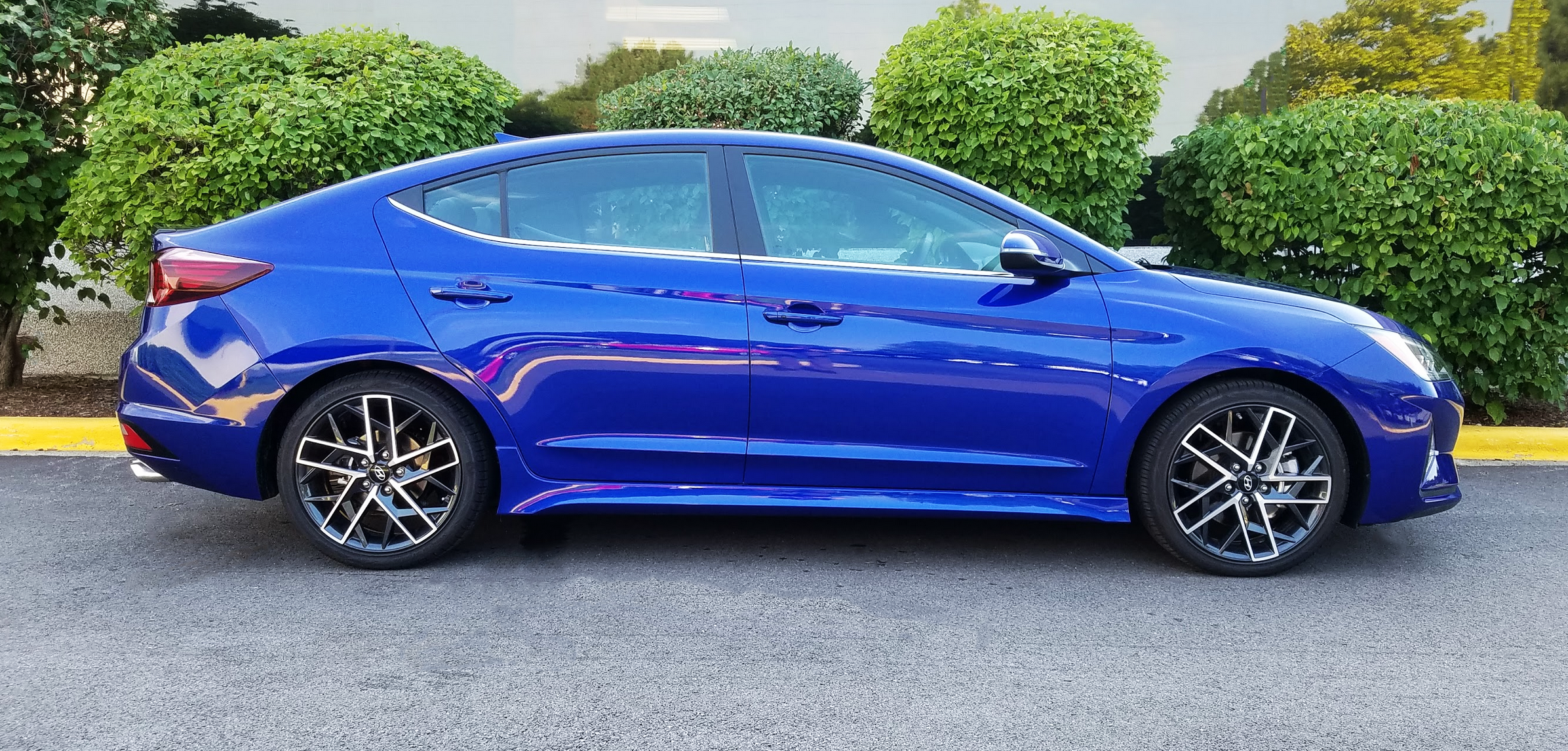
First Spin: 2020 Honda Civic Si
2019 Hyundai Elantra Sport

